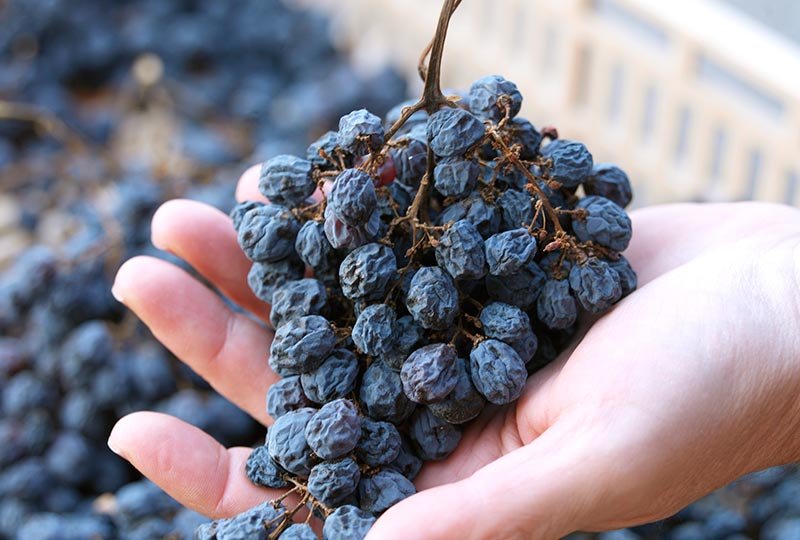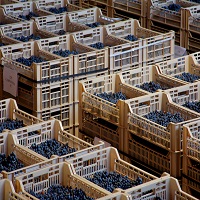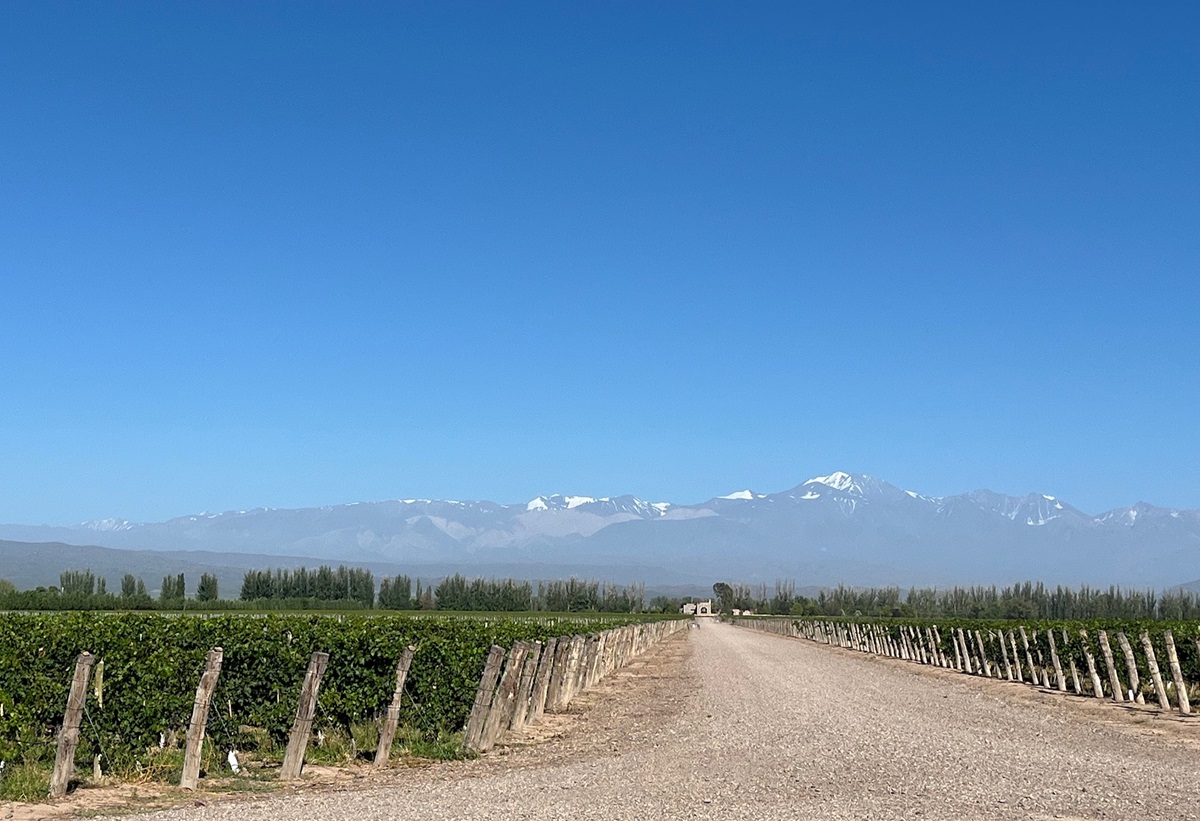AMARONE

(Published in The Scotsman 15 March 2014)
By Rose Murray Brown MW
Liquorice and balsamic, cherries and cocoa. The distinctive flavours and bitter-sweet taste of Amarone are adored by many who love powerful lush red wines.
 Once a wine revered for its outstanding quality, deriving from the special dried-grape process, this special ancient wine has now become one of Italy’s most popular red wines. Sadly, with this popularity has come a tidal wave of sub-standard Amarones as mass producers cash in on its fame.
Once a wine revered for its outstanding quality, deriving from the special dried-grape process, this special ancient wine has now become one of Italy’s most popular red wines. Sadly, with this popularity has come a tidal wave of sub-standard Amarones as mass producers cash in on its fame.
Originally made 2,000 years ago in Roman times, from super-ripe grapes grown and air-dried on racks (the method is called Appassimento) up in the Valpolicella hills northwest of Verona. It was a tricky winemaking process, so for centuries Amarone was sipped as a rare wine made in tiny quantities from a handful of family producers, like the Allegrini, Speri and Masi.
The best producers still use the traditional methods. Hand-picking native Corvina and Rondinella grapes, laying individual bunches onto bamboo racks in drying lofts or into special trays in drying rooms up in the cooler hills, where they are dried for three months during which time the grapes loose about 40% of their weight enhancing the concentration and unique flavours of Amarone – before it is fermented and matured in oak.
Sandro Boscaini, who runs the Masi family winery, remembers that people only thought it was possible to make Amarone up in the cool Valpolicella hills as recently as the 1960’s. Even in 2009 when the Italian authorities gave Amarone its revered DOCG status they sadly did not specify that it had to come from the classic (classico) hills northwest of Verona.
“What is important to realize is that it is the grape’s origin that is more important than the drying process for making quality Amarone today”, says Boscaini – locally known as Mister Amarone.
Now, today drying techniques have been modernized. It is now easier for normal Valpolicella producers and big co-operatives with vineyards on lower lying plains to churn out quantities of cheaper versions of Amarone.
So the increase is staggering. In the late 1990’s, 1.5 million bottles of Amarone were produced, but now it has risen to over 14 million bottles. Now Amarone is becoming more popular than standard Valpolicella (Valpolicella production has fallen from 50 million to just 24 million bottles).
So for those looking for ‘authentic’ Amarone, the key is knowing what to look for on the label. Firstly, look for ‘Classico’ which indicates it has come from the classic heartland of Valpolicella.
The other thing to look for is a special ‘A’ sticker on bottles. Twelve families have formed the Amarone Family association with their own charter: Masi, Allegrini, Tedeschi, Zenato, Brigaldara, Speri, Begali, Tommasi, Nocolis, Venturini, Tenuta Sant’Antonio and Musella. Their charter stipulates they have all been in business for over 17 years and Amarone is their prestige wine, with a minimum of 15% alcohol and 30 months maturation in wood.
What few realize is Amarone actually derived from the sweeter Recioto wine. The Amarone style was actually created by mistake when a Recioto failed to stop fermenting resulting in a dry bitter wine which they called Amarone.
Sweeter Recioto is made in a similar way, but with longer drying of the grapes and the fermentation is stopped to ensure that the result is moderately less alcohol and sweeter taste. It has less of the bitterness of Amarone – and as a sweet red works best with chocolate-based deserts.
Another style we are now starting to see much more of on our shelves is Ripasso. This is another derivation of Amarone – but now producers like Masi and Allegrini are adopting more modern double fermentation techniques to freshen up this style. So Ripasso works well as a gentle introduction to the more expensive Amarone style.
At our tasting of 16 different Amarone, Recioto and Ripasso wines these were the most popular of the wines. Prices might seem steep for Amarone, but bear in mind the careful selection and labour-intensive painstakingly long process used to make these very special wines.

TASTE TEST:
RIPASSO
Valpolicella Superiore Ripasso Capitel San Rocco 2011 Tedeschi
(£15.49 Great Wines Direct, Corking Wines, Strictly Wine)
Very popular for its lush ripe cherry fruits, a vibrant Valpolicella with extra mouthfeel from a very good recent vintage.
AMARONE
Amarone Classico 2010 Cantina di Negrar
(£18 Majestic Wine)
A well-priced entry level Amarone made in the classic heartland by a well-run co-operative: hints of cherry, soya and vanilla.
Amarone Classico 2009 Allegrini
(£55 Valvona & Crolla; Luvians; The Wine Society; Waitrose)
This is the ‘real deal’ said our tasters. Dark chocolate aromas, beautifully balanced fruit and acid, lush intense mouthfeel, so elegant with exotic spice, bitter sweet soya notes and a complex finish. Allegrini are true masters in the art of Amarone. STAR BUY
Amarone Classico Vigneto Monte Sant’Urbano 2008 Speri
(£47.50 Pipai Wines www.pipaiwines.co.uk 07861063785)
Very intense, licquorice and soya notes – a single vineyard Amarone which was popular with our tasters for its depth of fruit, savoury notes and lingering finish.
Amarone Classico 2009 Zenato
(£45 Wine Direct, Hard to Find Wines)
Strikingly modern in style with more ripe upfront fruit dominating the palate, lush and juicy style.
Amarone Classico Riserva 2008 Masi
(£50 Aitken Wines, Dundee; Fountainhall Wines, Aberdeen & Stonehaven; Inverarity, Glasgow)
This was the most popular Riserva, longer aged in oak with fabulous depth, richness, balance of fruit with coffee, cocoa and oak notes and a very attractive soft tannic finish. STAR BUY
RECIOTO
Recioto Classico Capitel Monte Fontana 2007 Tedeschi
(£36.99 for 50 cl bt Great Wines Direct, Strictly Wine, Corking Wines)
Very cherried, sweetness very evident with fresh acid notes and moderate alcohol at 14.5%.
wine tastings
The perfect gift for the wine enthusiast in the family. Rose does In-person tastings too.
cellar advice
Rose does cellar valuations for private clients, valuations for insurers & bespoke portfolio management.
Related stories
March 31, 2024
By Rose Murray Brown MW Published in The Scotsman 30 March 2024 On 2 February 1659, the first wine made from grapes grown in South Africa was crafted by the Governor of the Cape, Jan van Riebeeck. He had planted vines four years earlier in the Company’s Garden near Cape Town from cuttings imported from France. Van Riebeeck’s first
March 24, 2024
By Rose Murray Brown MW Published in The Scotsman 16 March 2024 Heatwaves and bushfires were very much on the agenda when I visited Chile last month as winemakers prepared for their 2024 harvest in blistering heat and drought, with a plume of smoke from the devastating fires lingering over coastal hills. Heat and drought are the greatest challenges
March 23, 2024
By Rose Murray Brown MW Published in The Scotsman 9 March 2024 I have two glasses of Malbec in my hands from the same high-altitude vineyard in Uco valley in Argentina. I am in the Catena Institute of Wine in Mendoza with winemaker Agustin Silva. He has asked me to taste the two wines, both from the 1500m high



